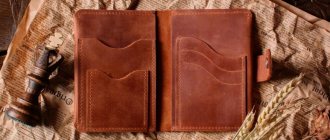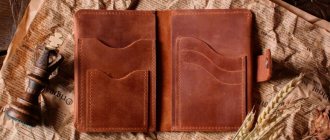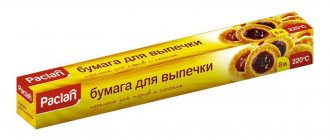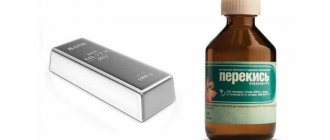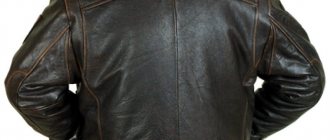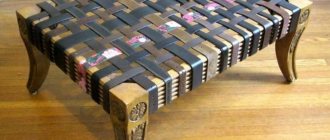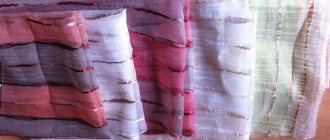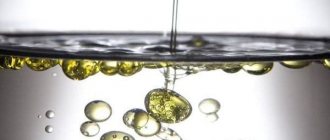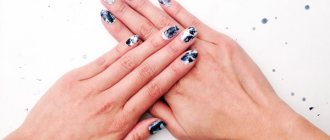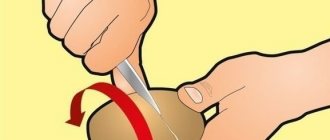As you know, autumn is just around the corner. On the eve of the new season, it is worth checking your clothes and shoes and making sure that your wardrobe is completely ready for use. What to do if it suddenly turns out that a large scratch “decorates” a beautiful leather jacket in the most visible place? Or, for example, did a new shoe have a hole from somewhere, which, naturally, does not decorate it at all? Sometimes varnish or cream helps correct the situation, but there are times when only thin skin can cope with the problem. If you wish, it is easy to make this material yourself. How to repair the damaged surface of a leather product yourself? We'll talk about this in our article.
What is “Liquid Skin”
Liquid leather is a composition that can paint over and eliminate minor defects in a product. The substance fills the damaged area, restoring its original appearance.
Upgrading car seats
The easiest way to repair a scratch on a leather product is to use acetone. Drops of solvent are applied with a regular medical pipette to a shallow cut. Use a small spatula to scrape off the dissolved paint and cover the scratch. Through cuts are eliminated using special glue and backing.
The restored area is covered with liquid skin, which is easily absorbed. When the composition dries completely, the damage becomes invisible. A color-matched dye or a mixture of shades can restore the product to its original appearance.
The product is produced for repairing leather products, but minor defects can also be corrected on vinyl or leatherette. The composition resembles a thick polymer cream. In case of more serious damage to the backing, painting with liquid leather is done after the glue has completely dried.
Painting shoes
Common Mistakes
How can you ruin the appearance of a jacket:
- seal the gap with PVA glue - the patch, held on by a water-soluble compound, will fall off after rain;
- sew on a machine with a thin needle - to work with leather in the studio they use a special machine and needles;
- overuse glue - marks will remain on the front side;
- To paint a patch without testing - you need to try on a small whole area of skin to see how the paint or cream will look.
Leather stitched on a regular sewing machine stretches and wrinkles. Dried excess glue can be wiped off with a dry cloth. You cannot wash off traces with water, as the moisture will cause the patch to come off.
Composition of the “Liquid Skin” product
Industrially, liquid leather compositions are made from alcohol, water and polymer dyes. The applied mixture is absorbed, filling the damaged area of the leather product, after which it must air dry. The solution is not a glue, but only a coloring agent.
You might be interested in what Espokada fabric is
Note! Some mixtures may contain an adhesive base and rubber resin, which form an elastic consistency. Making a similar liquid yourself is possible using acrylic artistic paints.
Scuff Repair
The best mixtures for repairing furniture and shoes
Many shoe cosmetics manufacturers supply liquid leather to the market. Their products differ little in composition and quality characteristics, the only difference is in packaging and price. Here are the most famous brands:
- Products from a domestic manufacturer. Available in individual bottles or sets of seven colors. Price – 550–1000 rub.
- Saphir Creme Renovatrice. The French product is characterized by durability and increased paint resistance. A tube of 25 ml can be purchased for 530 rubles.
- Liquid leather. The products of the Russian manufacturer are sold in 125 ml bottles, the price is 600–650 rubles.
Product benefits
Many problems can be solved using such a composition. For example:
- extend the service life of the worn surface of the product;
- eliminate minor damage, scratches and frayed edges;
- needle punctures and glued pieces of skin can be disguised with liquid skin;
- radically change the color of the product;
- restore seriously damaged leather surface;
- change the surface texture by applying putty and liquid leather composition;
- save money to buy new products to replace old ones that have lost their appearance.
Important! You can do minor repairs to shoes or leather goods yourself.
It’s easy to touch up scratched heels or knocked-off toes of shoes at home. You can’t take a leather sofa scratched by a cat to the workshop, and calling a specialist to your home can be unreasonably expensive. It’s a different matter if you do the restoration yourself.
Sofa restoration
Several traditional methods for restoring the surface layer
In some cases, it is necessary to eliminate the consequences of accidental damage (scuffs, small cuts) on the surface of a leather product. To independently solve such problems, there are several proven means, including the so-called liquid skin. With your own hands you can do a pretty good job of repairing knocked-off socks on your boots or a scratch on your jacket.
The repair method largely depends on the hardness, quality, thickness of the base, as well as the nature of the damage. Regular abrasions can be easily painted over with nitro paint from an aerosol can. The main thing here is to choose the right color and carefully, in a thin layer, spray the composition over the worn out areas. It is recommended that complete painting of the product be carried out in a specialized workshop.
Homemade liquid leather will help to repair a thin scratch. With your own hands, drop a little acetone onto the back side of the product or a piece of the same leather using a pipette. Immediately use a small spatula to scrape off the dissolved paint and carefully cover the cut with it. This method has long been known to shoemakers and restorers of shagreen items. Its disadvantage is that it is only suitable for restoring minor, small damage. You can get rid of through cuts only through a more complex procedure using special adhesives and substrates.
DIY “Liquid Skin”
If the required shade of the paint composition is not available, it is possible to prepare the “Liquid Skin” product yourself.
For production you will need:
- acetone solvent;
- regular pipette;
- a piece of leather of similar quality and texture;
- knife and small spatula.
The liquid type of material can be easily prepared with your own hands from the same material that needs to be restored. Acetone dissolves the material in the selected area. The scraped off particles are transferred to scratches or worn areas and rubbed into the surface of the product with a spatula. The area cleared of excess particles is dried and painted with a color-matched composition.
Bag with full surface restoration
Step-by-step job description
You may have noticed that the materials list doesn't mention liquid leather ingredients. This is not surprising, because we will make a product for repairing a leather product from the product itself, or rather, from its outer covering. The “donor” for restoration of the damaged area will be a small piece of material that is located in an inconspicuous place. For example, if you need to cover up a scuff on the toe of a shoe, look at the insole, the inside of the tongue, and the lining under the zipper to find a suitable place.
When the “donor” has been found, it’s time to begin the main part of the work.
To get liquid leather and return the product to its original appearance, proceed as follows:
- Pipette a little solvent and drop it onto the site that will be the “donor”. Leave the liquid for a few minutes so that it has time to soften the paint layer.
- Meanwhile, moisten a rag with alcohol and thoroughly wipe the damaged area with it, removing all dust, grease and other contaminants.
- Take a utility knife and, with the front of it, carefully remove the top layer of skin from the area treated with solvent. It will be soft and pasty, so you won't need much effort.
- Without hesitating for a minute, apply your homemade liquid skin to the damaged area and spread evenly. If there is not enough money, repeat the procedure described in steps 1–3.
- Leave the product to dry.
How to use liquid skin
Dried paint does not cause any harm to humans, but some precautions exist:
- It is preferable to work with medical gloves;
- protect your eyes from contact with the product;
- do not allow the undried product to touch any skin;
- the product is poisonous and dangerous;
- keep jars with the composition in a place inaccessible to children and animals;
- if the product gets on the body, rinse the affected area thoroughly under running water;
- should be used with caution for artificial fabrics imitating leather.
You may be interested in what kind of fabric is used for sewing bedspreads
There is no need for special skills or experience to paint damaged areas of the product. The degreased surface is simply painted and dried well.
If it is not possible to select a material to seal a cut or scratch, then use an inconspicuous part of the product. Apply a few drops of acetone to the lapel of a jacket or boot to dissolve the leather. Quickly scrape off the material and apply it in the required place, rubbing it in with a spatula. The dried surface is polished with a soft cloth, then the desired color is applied.
Note! The painted surface acquires the qualities of a leather product after complete drying. The manufacturer indicates in the instructions how to use liquid leather correctly.
Repair using adhesive
Restore the elasticity of a leather jacket
It is always worth remembering that the skin should be soft and elastic, this is its normal condition. You can prevent the appearance of cracks by maintaining the elasticity of the skin. To do this, use the following tools:
- Castor oil. Mix 50 ml of oil and egg yolk until smooth. Wipe your jacket with this mixture.
- Laundry soap. Half a bar of laundry soap should be dissolved in a liter of hot water. Add five grams of fish oil and forty grams of ammonia to the resulting solution. Treat the jacket with the resulting product.
- Butter. The elasticity of the jacket can be restored by using butter. To do this, dissolve the oil in warm water (3 liters 70 grams). Add ammonia to the mixture in a ratio of 3:1.
- Ammonia or acetone. Wipe the product with acetone (ammonia), then also thoroughly treat it with glycerin.
Repairing significant damage
To restore leather products damaged by a cut or tear of the material, it is necessary to use a backing made of fabric, gauze or a piece of leather. It all depends on the thickness of the leather product and the shape of the damaged area.
The cleaned area is degreased with alcohol, a piece of leather is glued on, straightened from the inside. After the glue has completely dried, clean the damaged area with a soft sponge. If a section of the surface is missing, you can use a manufactured stencil and, after applying putty, transfer the textured pattern using the imprint method. After the area to be restored has dried, you can begin painting the product.
Professional set for leather restoration
Corner break
There are situations when the jacket gets caught on sharp objects, which leads to rupture of the material. To repair the damage, you need to rip the lining with any sharp object.
Step-by-step instruction:
- After turning the jacket inside out, opening the seam near the damage, you need to lay it out in front of you to make it more convenient to work.
- Moisten a cloth with solvent and wipe the area to be treated.
- Cut a patch larger than the damage by 10-15 mm on each side.
- Cover the patch and the edges of the tear with glue. Do not apply adhesive mass to the ends of the material.
- Let the first layer harden for 20 minutes.
- Repeat the procedure.
- Apply the patch to the torn area. Smooth out its edges and place a heavy object on top.
- After 10-15 minutes, turn the jacket back inside. Using a toothpick, apply glue along the edges of the patch.
- Press down with a load for a day.
All that remains is to sew up the lining from the inside.
How to make a pattern if the surface was not perfectly smooth, but had a pattern
A napkin soaked in an adhesive solution is applied to the undamaged area of the surface, which, after drying, will preserve the shaped surface of the product. This stencil can be briefly applied to the surface of the wet putty to obtain an impression. The textured front side has now been restored using a template and a layer of coloring composition can now be applied.
Complete restoration of a handbag
Obtaining a relief texture on thin lycra
Not only liquid leather is used to care for leather products. They apply special putties, sprays and putties with their own hands. One of the features of all these products is the ability to use only on a smooth surface.
To restore the textured front side, a pattern template is first created. An ordinary paper napkin with a small amount of substance applied to it is applied to the undamaged area of the product. The resulting stencil with the printed relief is removed for several hours to dry completely. When working on a restoration, the template is pressed against the damage for a few seconds immediately after applying the second coat of paint. This technique will make the repair site invisible.
Repairing leather from a burnt cigarette
The simplest way to restore a surface damaged by a cigarette butt is to clean the face layer to eliminate unevenness. The putty is applied several times, allowing each layer to dry. Apply the final layer and remove excess composition with a soft material. The recipe for restoring the original appearance of a product is quite simple and accessible.
You might be interested in this All about satin jacquard, fabric for bed linen
Minor jacket repairs
The old method, used by people for many decades, does not lose relevance to this day. Knocked shoe socks or scratches on the sofa, a worn-out jacket or a favorite handbag that has lost its appearance can be repaired and updated with your own hands.
https://www.youtube.com/watch?v=2h4nMrvDAo8
